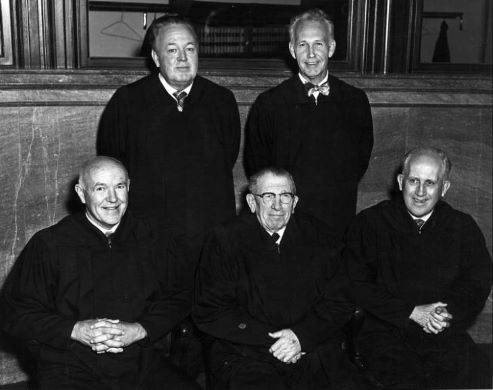This article originally appeared in The Missoulian.
In 1972, the Montana Supreme Court decided its most important case ever: Cashmore ex rel. Montana v. Anderson. The court resolved a disputed election and held that Montana voters had approved a new state constitution.
However, new findings suggest the constitution actually failed of ratification.
When I served as chairman of Montanans for Better Government during the 1990s, many people told me that the Cashmore decision was wrong — even corrupt. At the time I dismissed those claims as tinfoil hat conspiracy stuff.
But in 2007 I read the court’s opinion and dissent for the first time. They raised such serious questions that I checked to see if other scholars had analyzed the case. I found it mostly surrounded by silence.
I contacted the primary legal journal at the University of Montana law school, for which I’d written several times previously. I proposed an investigation of the Cashmore case and its surrounding circumstances. The editors rejected my proposal as too controversial.
Other work forced me to defer the project. But last year I finally began an investigation into the case and the events surrounding it. The results were recently published in the British Journal of American Legal Studies, which unlike most legal journals, is edited professionally and peer reviewed.
Here is some of what I learned:
The 1972 constitution is often advertised as a purely Montana project. In fact, it was a local episode in a national campaign to replace state constitutions with charters that were more “flexible” (i.e., afforded government more power). This campaign was supported in part by federal dollars. It failed in some states, such as Texas, but succeeded in others, such as Illinois and Montana.
The adoption process in Montana was clearly tainted. Advocates improperly dipped into government resources to promote their cause. They persuaded the legislature to create two successive tax-funded commissions that distributed highly biased information. They also used government money to prepare pro-constitution campaign material.
Moreover, advocates manipulated the ballot language and other aspects of the 1972 constitutional referendum. For example, Montanans overwhelmingly favored the death penalty. The official ballot inaccurately suggested to voters that only if they approved the new constitution would Montana continue to have a death penalty.
Even more troubling was how the referendum results were treated. The universally understood standard for approval was a “yes” vote by a majority of everyone who participated in the special election, no matter which of its four issues they voted on. Officials and the press told citizens repeatedly that they could vote “no” on the constitution by abstaining on that question.
The certified returns showed that the constitution had failed the universally understood standard. Many who cast ballots on other issues had decided to vote “no” on the constitution by abstaining.
However, Gov. Forrest Anderson, relying on the fact that there were more explicit “yes” votes than explicit “no” votes, proclaimed the document ratified. In doing so, he overrode objections from the state’s chief election officer and a member of his own party — Secretary of State Frank Murray.
Dr. William Cashmore of Helena and Stanley Burger of Bozeman challenged Anderson’s proclamation in the Montana Supreme Court. A factual question soon arose. Basic judicial standards required a hearing on the factual question. But the justices never held one.
In the initial vote in chambers, the five justices apparently split 2-3 against the constitution. At some point later, a justice flipped. (Most witnesses suggest it was John C. Harrison, but there is some internal evidence for Frank Haswell.) There is credible — although not decisive — evidence of improper political pressure on the swing justice, resulting in the court upholding the constitution 3-2.
The full article is available at here. It includes links to all relevant documents, so you can read them for yourself.








